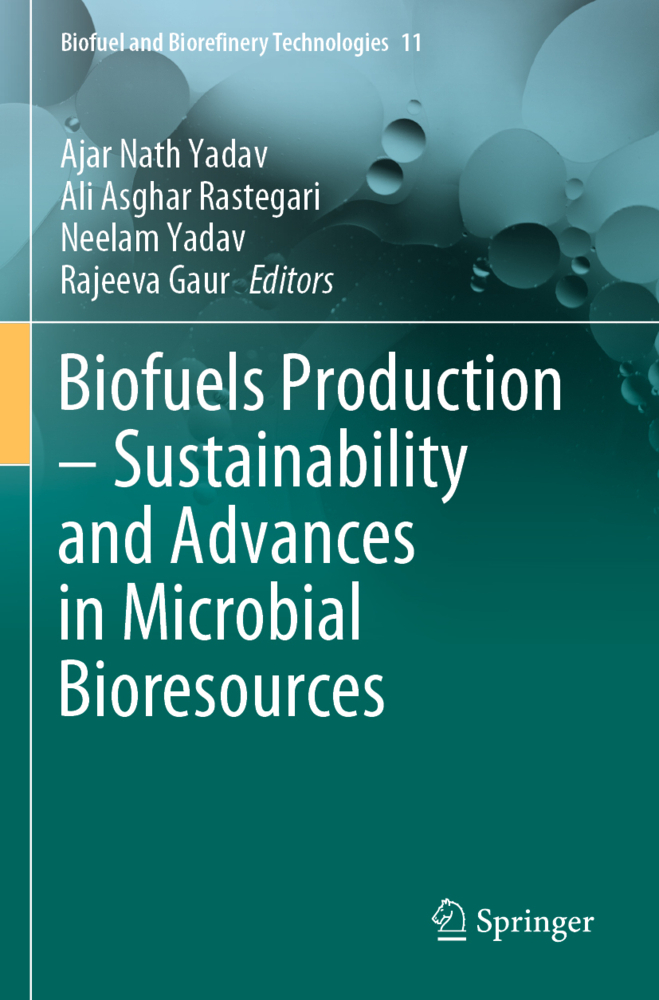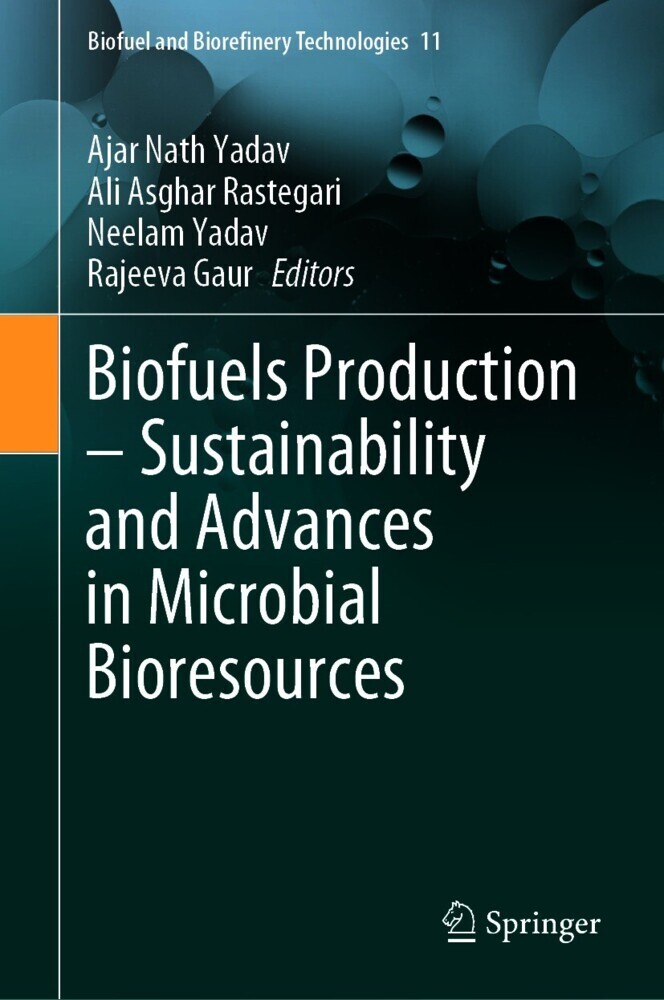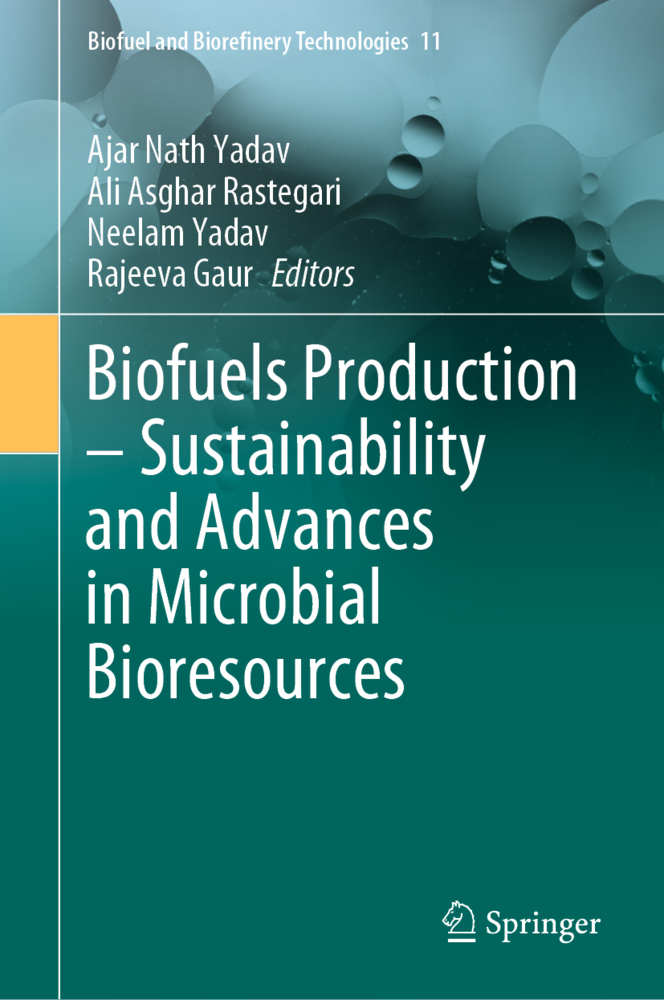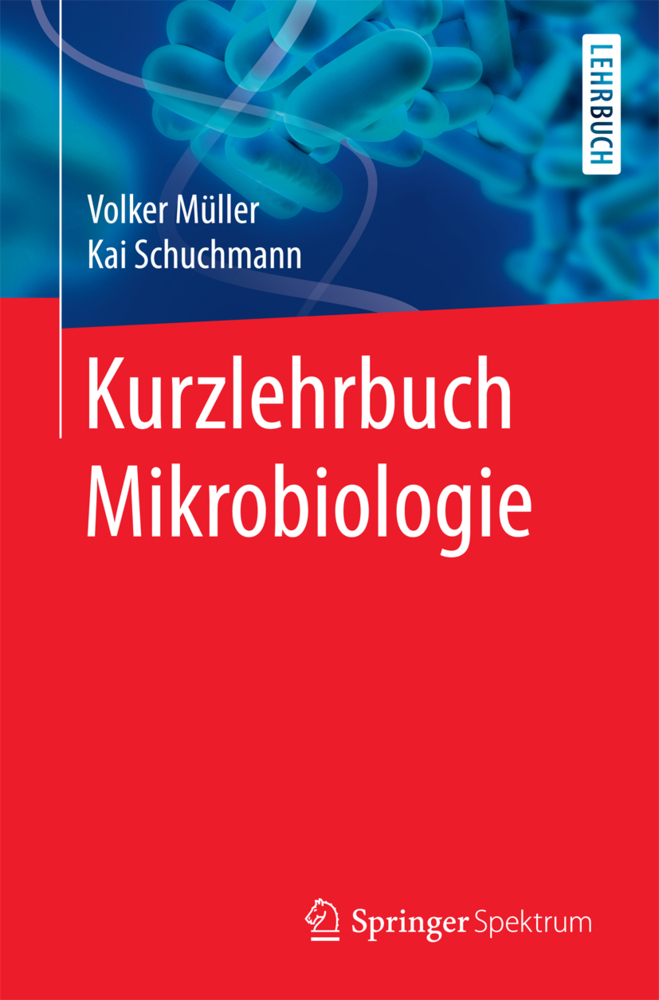Microalgal Biotechnology: Integration and Economy
With the high interest in renewable resources, the field of algal biotechnology has undergone a huge leap in importance. This book treats integrated approaches to bring the high potential of microalgae into application, accelerate the development of really working production processes and put finally the products on the market. So this book will allow protagonists and decision makers in academia, industry, and politics to get a clear picture of current possibilities and future trends in microalgal biotechnology.
1;Preface;5 2;List of contributing authors;15 3;1 Introduction - Integration in microalgal biotechnology;23 3.1;1.1 Integration on the process level;24 3.2;1.2 Integration on the metabolic level;26 3.3;1.3 Integration into environmental conditions;27 3.4;1.4 Adaptation to cultural realities;28 4;Integrated production processes;33 4.1;2 Products from microalgae: An overview;35 4.1.1;2.1 Microalgae: An introduction;35 4.1.2;2.2 Products;37 4.1.2.1;2.2.1 Use and production of algal biomass;37 4.1.2.2;2.2.2 Microalgae for human nutrition;40 4.1.2.2.1;2.2.2.1 Spirulina (Arthrospira);41 4.1.2.2.2;2.2.2.2 Chlorella;42 4.1.2.2.3;2.2.2.3 Dunaliella salina;43 4.1.2.3;2.2.3 Microalgae for animal feed;43 4.1.2.4;2.2.4 Microalgae as natural fertilizer;44 4.1.2.5;2.2.5 Microalgae in cosmetics;44 4.1.2.6;2.2.6 Fine chemicals;45 4.1.2.6.1;2.2.6.1 PUFAs;45 4.1.2.6.2;2.2.6.2 Pigments;48 4.1.2.6.2.1;Pigments as antioxidants;48 4.1.2.6.2.2;Pigments as natural colorants;50 4.1.2.6.3;2.2.6.3 Polysaccharides;51 4.1.2.6.4;2.2.6.4 Recombinant proteins;53 4.1.2.6.5;2.2.6.5 Stable isotopes;53 4.1.2.7;2.2.7 Micro- and nanostructured particles;53 4.1.2.8;2.2.8 Bulk chemicals;55 4.1.2.9;2.2.9 Energy production from microalgae;57 4.1.2.9.1;2.2.9.1 Biodiesel;57 4.1.2.9.2;2.2.9.2 Bio-ethanol;62 4.1.2.9.3;2.2.9.3 Bio-hydrogen;63 4.1.2.9.4;2.2.9.4 Bio-gas;64 4.1.2.9.5;2.2.9.5 Biorefinery of microalgae;65 4.1.3;2.3 Conclusion;66 4.1.3.1;References;66 4.2;3 Spirulina production in volcano lakes: From natural resources to human welfare;73 4.2.1;3.1 Introduction;73 4.2.2;3.2 Natural Spirulina lakes in Myanmar;74 4.2.3;3.3 Environmental parameters of Myanmar Spirulina lakes;76 4.2.4;3.4 Spirulina production from natural lakes;79 4.2.4.1;3.4.1 Harvesting;79 4.2.4.2;3.4.2 Washing and dewatering;80 4.2.4.3;3.4.3 Extrusion and sun drying;81 4.2.4.4;3.4.4 Lake-side enhancement ponds;83 4.2.5;3.5 Sustainable Spirulina production from volcanic crater lakes;84 4.2.6;3.6 Myanmar Spirulina products;85 4.2.7;3.7 Spirulina as biofertilizer;86 4.2.8;3.8 Spirulina as a biogas enhancer;89 4.2.9;3.9 Spirulina as a source of biofuel;89 4.2.10;3.10 Myanmar and German cooperation in microalgae biotechnology;89 4.2.11;3.11 Discussion;90 4.2.12;3.12 Conclusion;90 4.2.12.1;Acknowledgments;91 4.2.12.2;References;91 4.3;4 Case study of a temperature-controlled outdoor PBR system in Bremen;95 4.3.1;Acknowledgments;99 4.3.2;References;99 4.4;5 Algae for aquaculture and animal feeds;101 4.4.1;5.1 Introduction;101 4.4.2;5.2 Microalgae use in aquaculture hatcheries;101 4.4.2.1;5.2.1 Microalgal strains used in aquaculture hatcheries;102 4.4.2.2;5.2.2 Methods of microalgae cultivation for aquaculture;104 4.4.2.3;5.2.3 Role of microalgae in aquaculture hatcheries;104 4.4.2.3.1;5.2.3.1 Microalgae as a feed source for filter-feeding aquaculture species;104 4.4.2.3.2;5.2.3.2 Microalgae as a feed source for zooplanktonic live prey;105 4.4.2.3.3;5.2.3.3 Benthic microalgae as a feed source for gastropod mollusks and echinoderms;106 4.4.2.3.4;5.2.3.4 Addition of microalgae to fish larval rearing tanks;107 4.4.2.3.5;5.2.3.5 Use of microalgal concentrates in aquaculture hatcheries;109 4.4.3;5.3 Use of algae in formulated feeds for aquaculture species and terrestrial livestock;110 4.4.3.1;5.3.1 Algae as a supplement to enhance the nutritional value of formulated feeds;110 4.4.3.1.1;5.3.1.1 Vitamins and minerals;110 4.4.3.1.2;5.3.1.2 Pigments;111 4.4.3.1.3;5.3.1.3 Fatty acids;112 4.4.3.2;5.3.2 Algae as a potential feed ingredient: source of protein and energy;112 4.4.4;5.4 Outlook;117 4.4.4.1;References;118 4.5;6 Algae as an approach to combat malnutrition in developing countries;123 4.5.1;6.1 Introduction;123 4.5.2;6.2 Algae in human food;123 4.5.3;6.3 Microalgae as a solution against malnutrition: meet Spirulina;124 4.5.4;6.4 Small-scale Spirulina production as a development tool;125 4.5.5;6.5 Spirulina as a business to combat malnutrition;126 4.5.6;6.6 Spirulina and its place in food aid and development p
Posten, Clemens
Walter, Christian
| ISBN | 9783110298321 |
|---|---|
| Artikelnummer | 9783110298321 |
| Medientyp | E-Book - PDF |
| Copyrightjahr | 2012 |
| Verlag | Walter de Gruyter GmbH & Co.KG |
| Umfang | 340 Seiten |
| Sprache | Englisch |
| Kopierschutz | Digitales Wasserzeichen |









